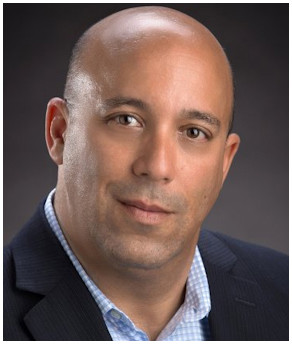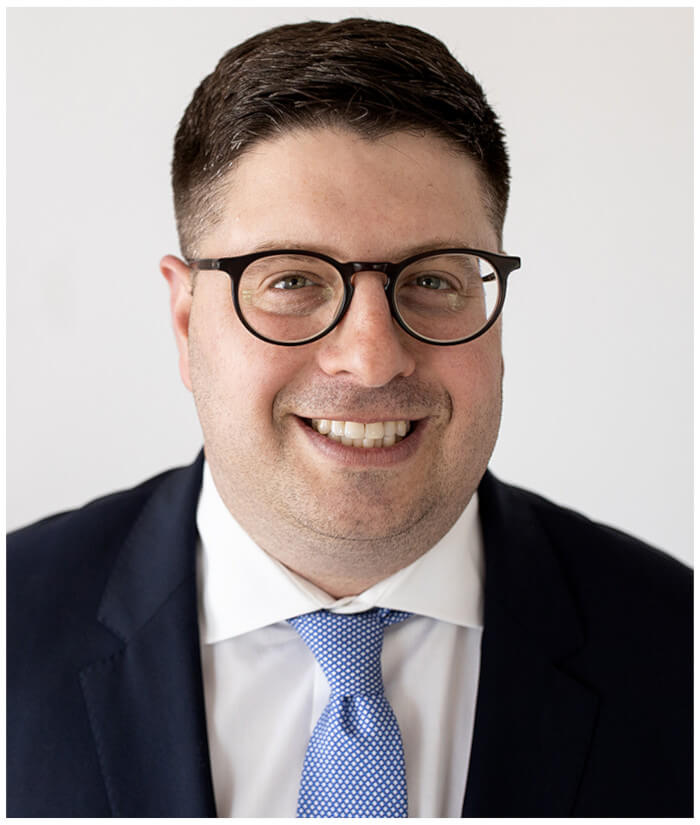Series of Negligent Acts by Healthcare Workers Lead to Death
Ohio Medical Malpractice: Case History
On August 6, Mr. Malkinne died of cardiogenic shock caused by a heart attack. The precise timing and nature of the heart attack is not entirely clear, unfortunately, because Mr. Malkinne died before a cardiac catheterization procedure could be performed, and there was no autopsy.
Four days earlier, Mr. Malkinne was working on a roofing job, when he suddenly felt chest pain. When he came home that evening, he was sweating and anxious. He told his wife that he did not feel well. He thought it might be heartburn or a muscle strain from the roofing job. She wanted to call the doctor, but Mr. Malkinne did not think it was necessary because his symptoms went away after he rested for a while.
Two days later, Mr. Malkinne did not feel well again. His wife was concerned because he would not even drink his usual morning cup of coffee, so she took him to a local healthcare clinic (Defendant #1).
Mr. Malkinne and his wife arrived at the clinic and were seen by a Nurse Practitioner (“NP”). The NP ordered an EKG, which was abnormal. She told Mr. Malkinne that he had suffered a heart attack, but she could not tell from the EKG whether it was old or new.
The NP ordered lab tests to see whether the heart attack was old or new, but rather than placing a STAT order, she sent the bloodwork to an outside lab with a 48-hour turn around time. Mr. Malkinne was sent home with prescriptions for ibuprofen (for muscle pain) and omeprazole (for heartburn). He was also set up for a stress echo test two weeks later at a nearby hospital.
At deposition, the NP testified that she told Mr. Malkinne to go to the emergency room immediately, but he refused to go because he was not having symptoms at the time. On the other hand, Mr. Malkinne’s wife testified that if they had been told to go to the emergency room, they would have gone. Instead, the NP gave the impression that the heart attack was old, and they could go home and wait for the lab results and follow up with a cardiologist in two weeks.
The next morning (August 5th), Mr. Malkinne was mowing the lawn and began not feeling well again. His wife drove him to the emergency room, where Mr. Malkinne reported worsening chest pain and difficulty breathing. He was also tachycardic (high heart rate). A chest x-ray was done, which showed findings consistent with congestive heart failure. An EKG was also done, which was abnormal. Laboratory results confirmed myocardial infarction (heart attack) and congestive heart failure. At 5:20pm, Mr. Malkinne was hypotensive, confirming that he was developing cardiogenic shock.
At approximately 6:00pm, the Emergency Department physician (Defendant #2) called the on-call interventional cardiologist (Defendant #3) of the catherization laboratory at a larger hospital (Defendant #4). The ED physician did not show the abnormal EKG to the cardiologist, nor did he tell the cardiologist that Mr. Malkinne was unstable and beginning to show signs of cardiogenic shock. He did, however, provide enough information for the cardiologist to accept Mr. Malkinne in transfer. The tentative plan was to take Mr. Malkinne to the catheterization lab the next morning.
There was a delay in transferring Mr. Malkinne due to bed availability at the second hospital. Eventually, Life Flight picked up Mr. Malkinne and departed by ground at 8:46 pm, nearly five hours following his arrival at the Emergency Department triage desk with symptoms and signs of myocardial infarction, congestive heart failure, and incipient cardiogenic shock.
Mr. Malkinne arrived at the hospital at 9:44 pm and was supposed to be evaluated by a first-year fellow in cardiology on call that evening (an employee of Defendant #4). The fellow entered a note in the chart making it seem as if he personally evaluated Mr. Malkinne upon arrival, but he did not. Instead, he stayed home and made orders over the phone. He did not call his supervisor, he did not see Mr. Malkinne, and he did not review the EKG that was performed shortly after Mr. Malkinne arrived. Instead, he merely ordered medications, none of which reasonably could be expected to turn things around for someone in Mr. Malkinne’s rapidly deteriorating condition.
At 12:57 am on August 6th, a rapid response team was called because Mr. Malkinne was crashing. The fellow was notified, but by the time he finally came to the hospital, Mr. Malkinne was coding and had to be intubated and resuscitated. The fellow called the attending cardiologist who immediately “activated” the catheterization laboratory and headed to the hospital. By the time the cardiologist arrived, Mr. Malkinne was coding again. This time, he could not be resuscitated. In fact, the catheterization could not even be completed. Mr. Malkinne died on the table. He was 63 years old.
The cause of death was listed on the Death Certificate as cardiogenic shock due to acute MI. There was no autopsy. There was no mention of the medical negligence that led to the official cause of death.
Ohio Medical Malpractice: Case Investigation and Preparation
Mrs. Makinne hired The Eisen Law Firm to represent her in the investigation of potential medical negligence and wrongful death claims.
Lead Counsel, Brian N. Eisen, began by collecting all the key medical records from various clinics and hospitals. Collecting the records was difficult, as several providers initially either refused or failed to provide complete records. Ultimately, however, the records were secured.
Mr. Eisen does not utilize nurse paralegals. Instead, he reviews all medical records – page-by-page – himself. He reviewed thousands of pages of records in this case during the initial investigation. He also used public records requests to obtain documents from the Ohio State Medical Board, including the applications for licensure of the various healthcare providers involved in Mr. Malkinne’s care.
Mr. Eisen also performs his own exhaustive medical research. In this case, he personally researched, retrieved, reviewed, and analyzed dozens of primary journal articles in connection with his case preparation.
Once Mr. Eisen developed a complete understanding of Mr. Malkinne’s medical history and his visits to the various clinics and hospitals for his heart condition, as well as the complex medical issues involved, he set about putting together a team of experts to review and prosecute the case. This included experts in the specialty fields of family/internal medicine, emergency medicine, and interventional cardiology. After reviewing the medical records and discussing the matter with Mr. Eisen, the experts agreed to provide “Affidavits of Merit” so that Mr. Eisen could file suit.
Ohio Medical Negligence: Case Litigation
The Eisen Law Firm filed suit in the county where the injury occurred. All the Defendants immediately filed motions to transfer venue. Mr. Eisen opposed the motions, but the court sided with the Defendants and transferred the case to a different county, one where plaintiffs have had a much more difficult time winning cases.
After the exchange of initial written discovery, Mr. Eisen deposed all the Defendant-physicians, as well as several nurses and other healthcare providers involved in the care of Mr. Malkinne. The Defendants then took the depositions of Mrs. Malkinne and her adult children.
The parties then exchanged expert reports, and depositions of the experts were scheduled. Defendants deposed Mr. Eisen’s three expert witnesses, and then Mr. Eisen deposed five of Defendants’ six experts (the final deposition was cancelled at the last minute). At the same time, Mr. Eisen and The Eisen Law Firm began preparing the case for trial.
Trial was scheduled in September 2020, but Defendants moved for a continuance because of the COVID-19 pandemic. The trial court granted the continuance and scheduled the case for mediation with a court magistrate.
Ohio Medical Error: Case Negotiations and Proposed Settlement
The parties attended mediation virtually in early September 2020, but the case did not settle at that time. In the following weeks, however, Mr. Eisen had private discussions with defense counsel, and the parties agreed to reconvene the mediation in November. Ultimately, after another full day of mediation, the parties agreed to a confidential, seven-figure global settlement.
Medical Error Case: Liability and Proposed Settlement
Liability in this case was not entirely straightforward. First, there were several different healthcare providers involved in Mr. Malkinne’s care over the course of many days, requiring suit to be filed against four separate sets of Defendants: (1) the NP and the clinic; (2) the ER physicians at the first hospital; (3) the attending cardiologist (at the second hospital) and his practice group; and (4) the cardiology fellow and the second hospital. While each one played a role in failing to treat Mr. Malkinne’s condition, it would have been difficult to convince a jury that four different sets of Defendants committed separate acts of medical negligence, and that each separate act of medical negligence was a substantial contributing factor in Mr. Malkinne’s death.
Second, the claims against each Defendant were complicated. For instance, the cardiology fellow’s negligence in failing to meet Mr. Malkinne at the hospital was basically indefensible, but the issue of causation was much more difficult to prove. According to some of the defense experts, by the time Mr. Malkinne arrived at the second hospital, there is nothing the fellow or the attending cardiologist could have done to save his life. Because there was no autopsy and the catheterization was not completed, the precise nature of Mr. Malkinne’s heart attack was not clear, making it hard for the Plaintiff’s experts to prove that earlier treatment would have saved Mr. Malkinne’s life.
Conversely, while treatment two days earlier would likely have been successful if the NP had sent Mr. Malkinne to the emergency department, the issue of the NP’s negligence was not as clear. According to Plaintiff’s expert, the NP should have recognized the seriousness of the situation and sent Mr. Malkinne to the emergency department immediately; but, that is precisely what the NP claimed to have done.
Moreover, the NP (and the co-Defendants) blamed Mr. Malkinne for refusing to go to the emergency department, which made contributory negligence a significant potential issue for trial. Indeed, not only might the jury have blamed Mr. Malkinne for refusing to go to the emergency department per the NP’s instructions, the jury might even have blamed Mr. Malkinne for not seeking medical attention when he first had symptoms. Especially without Mr. Malkinne there to explain himself, the issue of contributory negligence would have been front and center at trial.
Furthermore, if the NP and the clinic were dismissed from the case (to avoid the issue of contributory negligence) – or, for that matter, if any of the other Defendants were dismissed – the remaining Defendants simply would be able to blame the “empty chairs” at trial.
Keeping all the Defendants in the case raised other potential problems. For instance, because each Defendant retained separate counsel, each Defendant presumably would be entitled to separate peremptory challenges at trial (12 total challenges for the defense team vs. three for the plaintiff, giving the defense a major advantage in selecting the composition of the jury), as well as separate opening statements, examinations of witnesses, and closing arguments. Overcoming the burden of proof is one thing, overcoming a 4:1 advantage at every stage of trial is another thing altogether.
Finally, while it is difficult to say for certain what effect the present pandemic might have had on a case such as this at trial, there is an undeniable concern that this pandemic has had a “halo” effect with respect to medical care providers, likely making this a sub-optimal time to take medical negligence cases to trial. Of course, that is assuming that a jury trial would be permitted to go forward in light of the pandemic anyway.
Taking into consideration all the strengths and weaknesses of the case, Mrs. Malkinne chose to accept – with her counsel’s blessing – the negotiated settlement offer.
The Eisen Law Firm: Medical Malpractice. Exclusively.
The Eisen Law Firm has been handling medical malpractice cases since 1976. In fact, medical malpractice and wrongful death cases are the sole focus of this boutique law firm.
The Eisen Law Firm does not hesitate to spend whatever is necessary in these cases, as it did in this case. (Incidentally, many firms borrow the funds needed to finance the case and then charge interest to the clients. The Eisen Law Firm does not engage in this practice.) The Eisen Law Firm also was prepared to, and did in fact, commit whatever time was necessary to see this matter through to completion. To commit the time and money necessary to handle these kinds of cases, The Eisen Law Firm limits its representation to only a few cases per year. The Eisen Law Firm regularly turns down new clients – even those with potentially strong cases – in order to maintain its focus on providing top-notch representation to its existing clients.
This matter required a significant investment of time and labor. Indeed, Mr. Eisen spent more than three years on this matter. He spent several months reviewing, organizing, and studying the medical records and relevant medical literature and discussing this matter with potential expert witnesses, several additional months putting together a dominant team of experts, and another two years litigating the case and preparing for trial. Mr. Eisen believes the only way to win any case against sophisticated, well-heeled adversaries is to be well-versed in the medical issues, to develop a strong theory of the case supported by great experts, and to be fully prepared to litigate the case to the end. That is precisely what he did here.
This matter presented novel and difficult questions that required the highest level of skill to perform the legal services properly. As this case involved several complicated and complex medical issues, the novelty and difficulty of the medical questions cannot be overstated. Unlike many business transactions or even other personal injury claims (e.g., slip and fall cases, car accidents, etc.), each medical negligence case truly is unique. Mr. Eisen had to spend countless hours researching and reviewing articles to learn everything he could about the key medical issues in this case. Only then could he hope to convince the responsible parties of their potential exposure. Only a seasoned medical negligence attorney working with preeminent medical experts can properly analyze and address these complex medical issues.
In this case, Mr. Eisen was able to provide some closure to Mrs. Malkinne and her children, to hold accountable those whose mistakes resulted in his death, and to maximize the recovery for them, without forcing the family to endure the emotional distress brought on by the uncertainty of a jury trial.
This case is a prime example of how a good medical malpractice attorney needs to know both the medicine and the law.





